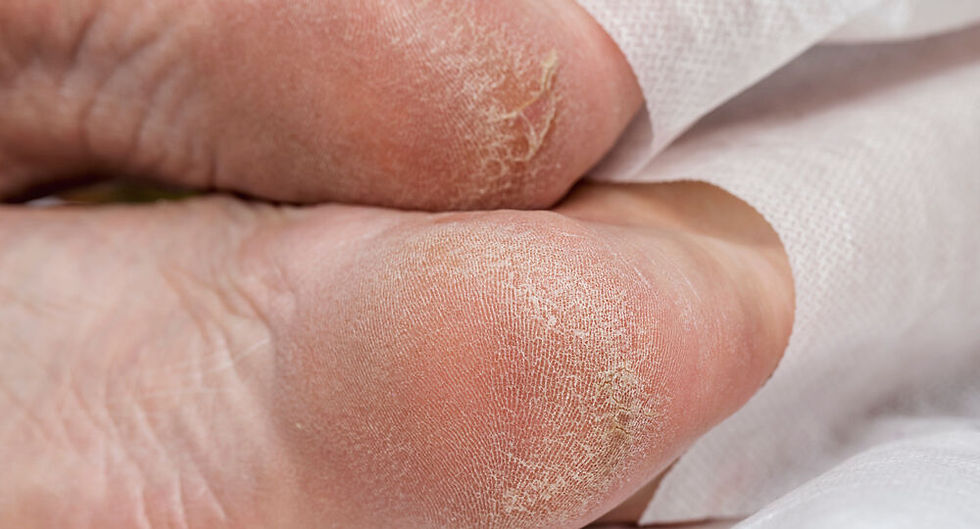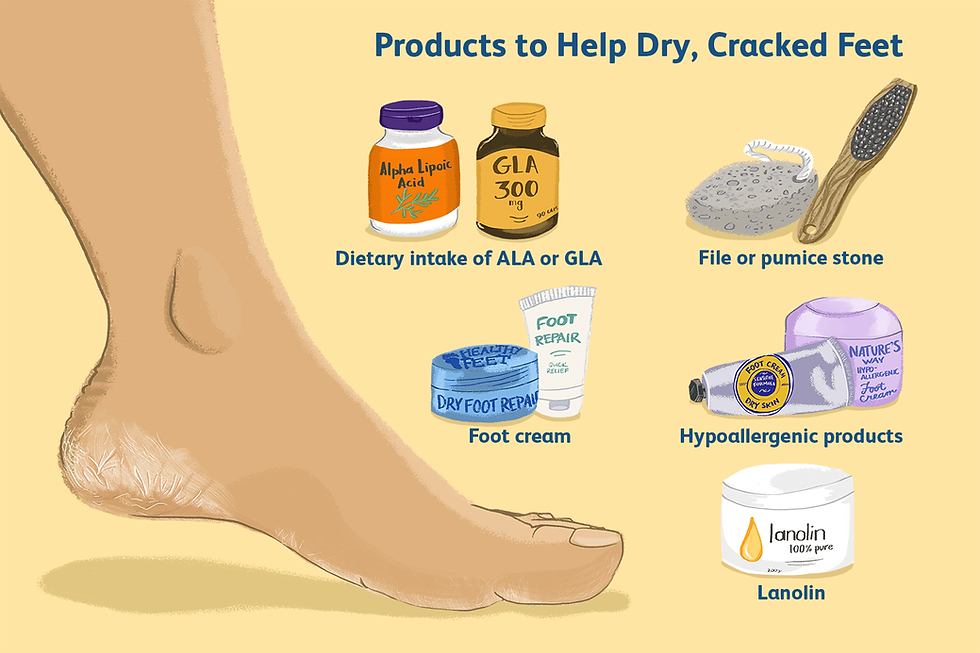November 30, 2024

Dry, cracked feet might seem like a minor issue, but as a foot nurse, I often see patients—especially seniors—who underestimate the risks. What starts as a cosmetic concern can escalate into painful and dangerous health problems if neglected.
Cracks in the skin, particularly around the heels, occur when the skin becomes excessively dry. For seniors, this can result from age-related changes, such as thinner, less elastic skin and reduced natural oil production. These changes make older adults more vulnerable to fissures. Contributing factors include dehydration, prolonged standing, wearing open-back footwear, or underlying health conditions like diabetes, neuropathy, or poor circulation.
When untreated, these cracks provide entry points for bacteria and fungi, leading to infections like cellulitis or athlete’s foot. In severe cases, particularly for seniors or those with compromised immune systems or diabetes, untreated cracks can progress to ulcers or systemic infections, which may require hospitalization or even lead to amputation.
What Happens When Cracked Feet Are Ignored?

Ignoring dry, cracked feet can lead to serious complications, especially for seniors:
Pain and discomfort: Walking becomes painful as the cracks deepen, affecting mobility and independence.
Bleeding: Deep fissures may rupture, causing bleeding and increasing the risk of infection.
Infections: Bacteria entering through cracks can cause cellulitis or abscess formation.
Ulcers: For seniors with diabetes or poor circulation, even small cracks can evolve into chronic ulcers that are difficult to heal.
Prevention Tips for Seniors

Preventing cracked feet requires extra care for seniors:
Moisturize daily: Use a rich, fragrance-free moisturizer, focusing on the heels. Urea or glycerin-based products provide deep hydration.
Stay hydrated: Adequate water intake supports skin health.
Wear appropriate footwear: Supportive, closed-back shoes help protect the heels and maintain skin integrity.
Use gentle exfoliation: Weekly use of a pumice stone or gentle foot scrub removes dead skin, but avoid over-scrubbing.
Inspect feet regularly: Seniors, or their caregivers, should check for cracks, dryness, or other changes.
What to Do When Cracks Appear

If cracks develop:
Apply intensive moisturizers: Thick layers of moisturizer or petroleum jelly under cotton socks overnight can promote healing.
Avoid harsh soaps: These strip natural oils and exacerbate dryness.
Consult a professional: For deep cracks, signs of infection (redness, swelling, or discharge), or persistent dryness, see a podiatrist or foot nurse.
For seniors, maintaining foot health is vital to preserving mobility, independence, and overall well-being. Addressing dry, cracked feet early prevents small issues from turning into major health concerns. Take proactive steps to ensure your feet carry you comfortably through every stage of life.

Comments